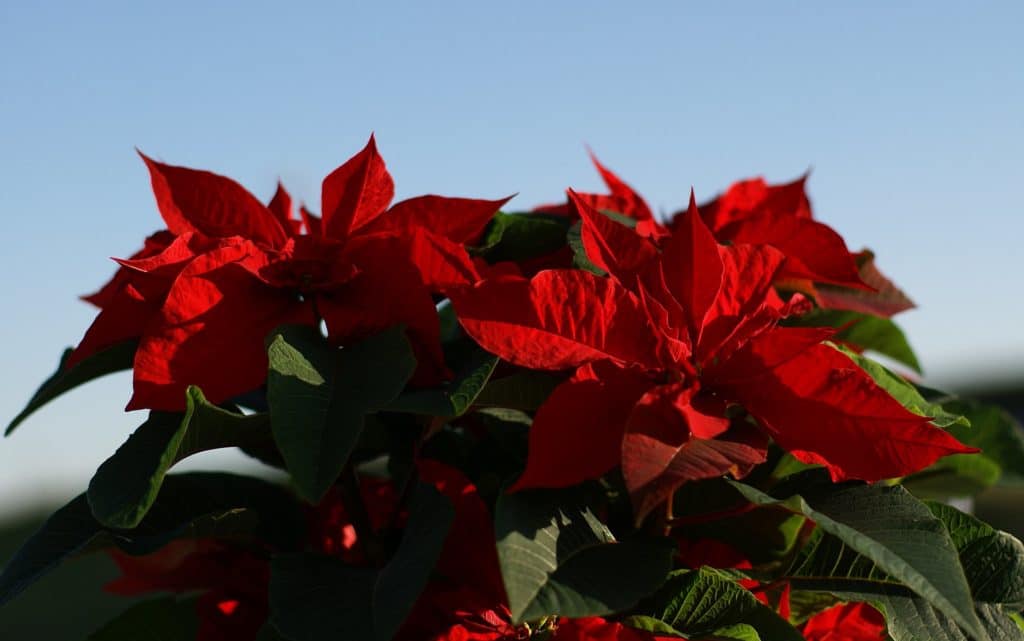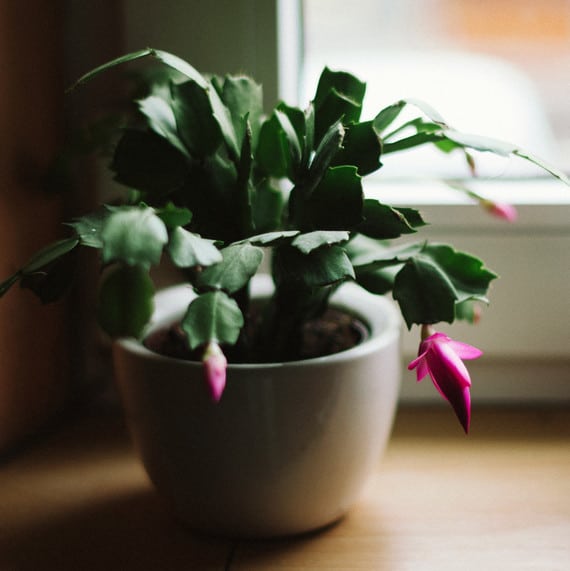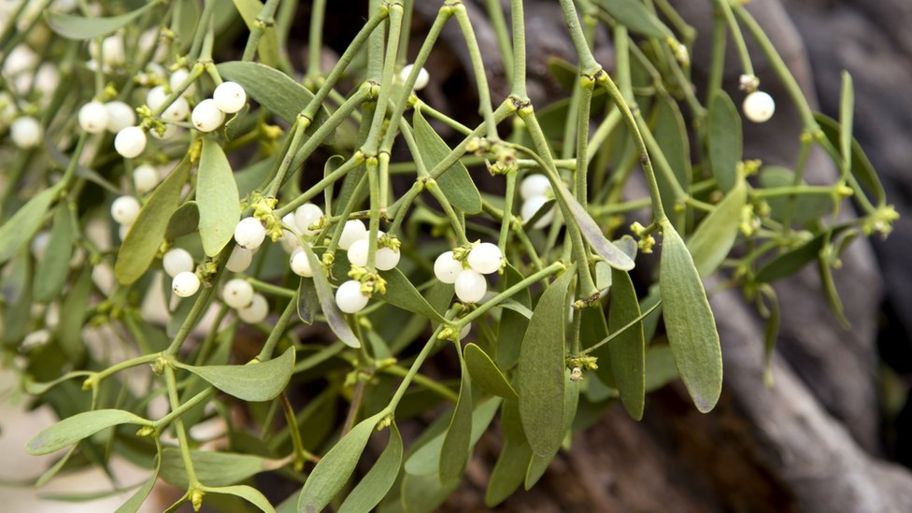The most popular Christmas flowers and instructions on how to grow them. Get inspired!
24. 5. 2024
What will you learn in this article?
Do you find yourself struggling to keep your Christmas flowers alive throughout the holiday season?
From poinsettias with their stunning, brightly colored leaf rosettes to the festive Christmas cactus and mistletoe, there are many different types of flowers that we use to decorate our homes during this special time of year.
Poinsettias, also known as Euphorbia pulcherrima, are particularly popular during the Christmas season.
These unique flowers originated in Mexico and come in a variety of colors, including red, pink, peach, cream, and white.
They are unmistakable with their beautifully shaped leaf rosettes, which can vary greatly in color and shape depending on the breeder. However, it’s important to note that caring for poinsettias can be a challenge.
They require a specific amount of light, water, and temperature control to thrive. Similarly, Christmas cactus and mistletoe have their own unique care requirements. If you want to keep your Christmas flowers looking their best throughout the holiday season, it’s important to understand their individual needs and create a care plan that works for them.
With a bit of love and knowledge, you can enjoy the beauty of these festive flowers in your home for weeks to come.

In most cases, you will get a star with red bracts, but there are also pink, peach, cream, and white ones. Some growers even breed them to be brightly colored and shaped differently than usual.
Ideal for growing a poinsettia
- To begin with, you need to provide it with suitable temperature conditions above 70°F.
- Do not place the flower pot on a cold windowsill; otherwise, cold air will be drawn to the star.
- Give her enough light, but again direct sun, that would harm her, it must be diffused light.
- Rainwater is best for watering. If you don’t have it, standing lukewarm water will do.
- Keep the substrate slightly moist at all times but not excessively wet so the flower is not overwatered.
- Placing the vaporizer close to the flower pot has worked well.
- For fertilizing, a classic fertilizer intended for indoor plants in flower is sufficient.
Post-Christmas care
A flowered poinsettia does not mean you throw it away immediately after Christmas.
As soon as it blooms, take it somewhere cool, minimize watering, and reduce the air’s humidity. Then, cut the star in early spring.
If the plant is too big, you can shorten its shoots by up to 30 inches.
However, you should be careful of the plant’s milk, as it is poisonous and can cause unpleasant skin burns.
The best time to transplant the plant is during the spring months, while watering and fertilizing should be done during the summer to keep it strong and healthy.
Growing and Fertilizing Christmas Cactus

The Christmas cactus (Schlumbergera) is a popular indoor plant that is widely enjoyed during the holiday season. To ensure its longevity and optimal health, proper care must be taken.
Originally from Brazil and found in the rainforest, the Christmas cactus has been crossbred over the years, resulting in a variety of cultivars with colors such as white, crimson red, purple red, and orange.
Suitable location
When it comes to positioning the cactus, it is essential to keep it away from direct sunlight, as it is not tolerant of such conditions. A semi-shaded area is ideal, such as a north-facing window.
If an east-facing window is used, closed blinds can be drawn to reduce the amount of light.
Christmas cactus care
Similar articles

Christmas in the Mountains: Where to Go? We Have Great Tips for You! Get Inspired!

Worst Christmas Gifts to Avoid: A Survival Guide for Holiday Shopping

Where to Go to the Seaside for Christmas This Year? We Have Great Tips for You

Creative Wrapping: Unique Ideas for Gift Presentation Beyond the Holidays
To encourage flowering, maintaining an optimal temperature range of 50°F-60°F is critical. The plant can grow at higher temperatures, but flowering will not occur. Over-watering must be avoided, as cactus roots do not tolerate excessive moisture. During flowering, the plant should be watered once a week, ensuring that the soil remains slightly moist but not overly wet. After flowering, watering should be reduced until new buds appear. Regular misting can be used to maintain adequate air humidity.
When watering and misting the plant, it is essential to use settled water, as tap water can contain chemicals that may damage the roots. If the cactus produces buds that fall off immediately, the air in the room may be too dry, necessitating an increase in moisture levels. Failure to bloom may indicate suboptimal temperature conditions. Caring for the Christmas cactus requires proper attention to detail. By following these guidelines, you can ensure that your cactus thrives and blooms beautifully year after year.
If you want to grow this typical Christmas plant yourself, be sure to read this article on how to care for a Christmas cactus .
Mistletoe and Christmas

Mistletoe, a semi-parasitic shrub of the Viscum species, is an essential part of the Christmas holiday season.
It is a popular Christmas flower and a symbol of love, peace, and goodwill.
While mistletoe can be readily found in stores, growing your own mistletoe can be a fun and rewarding experience that is well within reach, provided that certain basic instructions are followed.
How does it work with other plants?
Mistletoe grows on the bark of other plants and sinks its roots into the trunk of the host plant, without causing any damage to it.
As a result, it gains access to water and nutrients, which are essential for its growth.
The seeds of mistletoe are dispersed to other trees by birds, which eat the berries and deposit the seeds along with their droppings on different branches.
How can you grow mistletoe?
To grow mistletoe, a fertile twig with white berries from the host tree is required. It is essential to determine the tree species that the mistletoe is growing on to ensure successful cultivation.
Mistletoe that grows on deciduous trees such as apple, maple, birch, poplar, hazel, acacia, willow, or cranesbill should be planted on another deciduous tree.
On the other hand, mistletoe that grows on coniferous trees such as pine should be planted on another pine for optimal germination.
Planting mistletoe
To plant mistletoe, a suitable tree must be selected, and a two to three-year-old branch must be cut into an inverted V or T shape using a sharp knife.
The cut should be made on the side of the branch that is away from the trunk of the host tree. The contents and seeds of a mistletoe sprig must be squeezed into an open cut or under loose bark.
The sticky substance present in the seeds facilitates easy adherence to the host tree.
A sunny winter day is the optimal time for sowing mistletoe. Mistletoe requires specific conditions to germinate and grow. It thrives in partial shade and needs a moist environment to grow successfully.
The ideal soil pH for mistletoe is between 6.0 and 6.5. The plant should be watered regularly to keep the soil moist but not waterlogged.
Fertilizing the plant with a balanced fertilizer once a month can help promote growth. If bird’s-tooth bushes are present in the garden, mistletoe can also be placed on their branches.
However, it is essential to ensure that the host plant is not harmed in the process. It is also crucial to note that mistletoe can take up to five years to produce berries. In conclusion, growing mistletoe can be a satisfying and fun experience.
By following the basic instructions, you can grow your own mistletoe and enjoy its beauty and symbolism during the Christmas holiday season.

